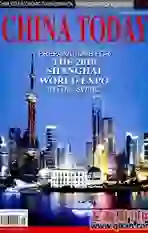Preparations for the 2010 Shanghai World Expo in Full Swing
2009-06-19BystaffreporterQIAOTIANBI
By staff reporter QIAO TIANBI
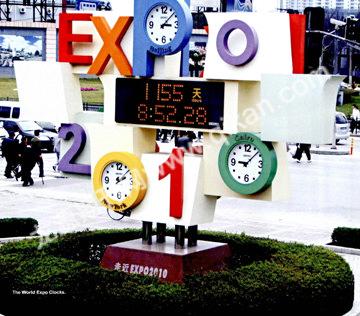
After the 2008 Beijing Olympic Games, the Chinese people are looking forward to the 2010 Shanghai World Expo with the same fervency.
The World Expo, started in London in 1851, is the worlds top-level exposition, known as the “Olympics of human intelligence.” For one and a half centuries, the World Expo has recorded every bit of progress made in science and technology, and explored major issues faced by humankind.
The 2010 Shanghai World Expo is the first such event held in China and in a developing country. China expects it to be a wonderful, unforgettable and successful experience of the world.
Preparations Proceeding in an Orderly Way
THE Shanghai World Expo will be held from May 1 to October 31, 2010. It is only one year until the opening, and preparations for the great event are proceeding in an orderly way. More than 200 countries and international organizations have confirmed their participation.
Simultaneous Construction of 100 Subway Stations
“It is estimated that the Shanghai World Expo will receive 70 million visitors, averaging 400,000 per day. Except for warfare and religious activities, there are seldom events of so large a scale in modern society. Therefore, we are faced with great pressure,” says Zhu Yonglei, deputy chief of the Bureau of Shanghai World Expo Coordination.
The pressure mainly comes from traffic, accommodation and demands on funds.
Shanghai is renovating its airport. On the eve of the expos opening, Shanghais airport will have a handling capacity of 83 million passengers. There will be no problem with visitors entering and exiting Shanghai.
Rail will be the main means of transport within Shanghai. During the World Expo, 50 percent of visitors will enter via rail. Five subway lines traverse the site. There are 10 subway stations on the expo site and surrounding areas. Visitors can go through security checks at the entrance to subway stations, greatly alleviating pressure on the expo site.
“At present, more than 100 subway stations are simultaneously under construction in Shanghai,” says Zhu Yonglei. By the end of 2008, Shanghais rail mileage totaled 234 kilometers, ranking ninth in the world. By the end of 2009, Shanghais rail mileage will reach 400 kilometers, ranking third after New York and London.

Zhu Yonglei reveals that although Shanghai will develop many ways of accommodation, including homestays, the city still cannot fully meet demand. Some visitors will be lodged in neighboring cities such as Hangzhou and Suzhou. Shanghai is building an inter-city railway to Hangzhou. It will take only 38 minutesfrom Shanghai to Hangzhou, and the intervals between trains will be very short.
The raising and usage of funds is of great concern to the general public. Zhu Yonglei said that running the World Expo through thrift and hard work is a concept penetrating the construction of the expo site. Many old buildings have been put to good use. For instance, the special steel workshop of the Shanghai No. 3 Iron and Steel Plant has been converted to a performance center, and three docks of Jiangnan Shipyard have been changed into performing centers. Making use of disused industrial facilities is an international trend.
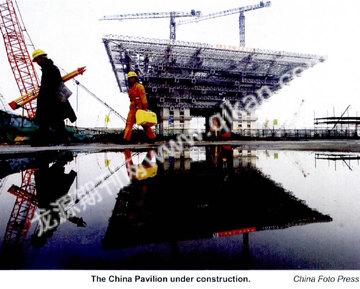
“Participating in the World Expo needs funds, and every pavilion needs tens of millions of US dollars. The global financial crisis has had an impact on all countries, and this is the first time a developing country has hosted the World Expo. When we won the bid, we promised to establish an aid fund of US $100 million, to which any eligible country can apply for funding. At present, 120 developing countries have benefited from this fund. For developed countries, we are doing our best to lower costs. As a whole, the cost of participating in the Shanghai World Expo is lower than in a developed country,” says Zhu Yonglei.
Although various countries have recently met economic difficulties, they are very concerned about the World Expo. Iceland, which has been hit seriously by the financial crisis, signed an agreement in December 2008 to participate in the World Expo. Zhu Yonglei declares, “At present, we have overfulfilled our promise of having 200 attendees made in our bid for hosting the Expo.” By March 17, 2009, a total of 232 countries and international organizations had confirmed their participation.
China Pavilion in Tang Dynasty Style
According to the rules of the Bureau of International Expositions (BIE) and the Convention on International Exhibitions, foreign exhibition halls at the World Expo must be dismantled after the event. This is to prevent over-commercialization of the land resources of the host country. The permanent buildings of the Shanghai World Expo make up 30 percent of the expo site, while the rest are all temporary buildings. The permanent buildings include the World Expo Axis, the China Pavilion, the Main Theme Pavilion, the World Expo Center and the Performing Arts Center. In building these permanent buildings the architects made use of Chinese elements and architectural characteristics of Shanghai.

When the blueprint of the China Pavilion was published, some people said it looked like Japanese architecture. In fact, it contains authentic Tang Dynasty architectural elements, which have been borrowed and used by Japanese architects for centuries. “In China, the Tang architectural style was lost for a time and has now come back,” explains Zhu Yonglei.
The China Pavilion is 63 meters tall, in the shape of an official cap, and also looks like a dou measure. It means “the crown of the Orient, the climax of Chinas development, the barn of the world, and a life of abundance for the people.” The China Pavilion is based on a traditional Chinese wooden structure of dougong – sets of brackets on top of columns supporting beams and roof eaves, each set consisting of tiers of outstretched arms called gong, cushioned with trapezoidal blocks called dou. This is a unique Chinese structure developed more than 2,000 years ago, which reached its zenith in the Tang Dynasty. The main color is gugong (Forbidden City) red. The walls of its colonnades are decorated by Chinese characters in seal style.
The concept of the Main Theme Pavilion drew inspiration from linong (Shanghai dialect for lanes and alleys) and laohu (roof) windows. The architectural method uses traditional paper folding handicrafts, forming a structure from two-dimensional planes in three-dimension space.
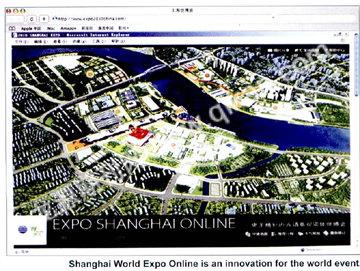
More advanced design concepts have been used in permanent buildings. Take the World Expo Performing Arts Center, for example. The flying saucer-shaped building has a maximum capacity of 18,000, but the audience space can hold 4,000, 8,000, 12,000 or 18,000 according to needs, and the size and shape of the stage can be changed at will, allowing for a huge variety of stage designs and visual effects. The design has set a precedent in China.
“Advanced energy technologies have been used on the expo site,” says Zhu Yonglei. All the permanent buildings have solar energy roofs and rain collecting devices. The World Expo Axis is the largest unit on the expo site. It is 1,045 meters long and 99-110 meters wide, lined with commercial facilities. After the World Expo, it can be turned into a huge shopping mall. There are six huge sunshine valleys used to collect sunshine and rain. The top of each sunshine valley is the size of a football field, and the area under each is the size of two football fields. Since the expo site is along the banks of the Huangpu River, the temperature difference between the river water and the building interiors can be employed for air-conditioning.
Characteristic Foreign Pavilions
In general, foreign pavilions are temporary. They fall into three types. First, there are self-built pavilions, created by participating countries. There are about 40 such pavilions. Second are the rented pavilions, built by the host country for participating countries to rent. Third are the joint pavilions. Some African countries, for example, hold that it is unnecessary to build an independent pavilion, so the host country has built an African Pavilion to jointly hold 45 African countries. These joint pavilions are also rented. Zhu Yonglei says, “We have been meticulous in the design and construction of the African Pavilion, and have adopted many African elements. Since African friends are good at singing and dancing, we have built an African Square for them.”
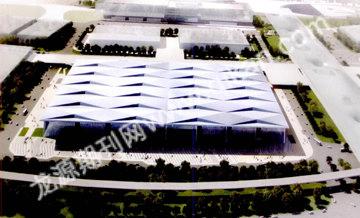
Zhu Yonglei admits that the investment in self-built pavilions is large. Every pavilion has its own characteristics. At present, the design plans for nearly 20 pavilions have been published, and construction has started one after another.
To choose the best plan, in 2007 Britain sent six groups to do an on-the-spot investigation in Shanghai. Back home, they put forward six plans and exhibited them in Shanghai for local inhabitants to vote on. After that, they selected the final plan according to related procedures. The exterior wall of the British Pavilion is covered by 60,000 optical fibers that can show different colors and form many different patterns, and these fibers can wave in the wind.
The architects of the Luxembourg (called lu sen bao in Chinese) Pavilion also conducted an investigation in Shanghai before construction started. In Chinese “sen” means forest and “bao” means castle; in combination Lusenbao means a “castle in a forest.” In the eyes of Chinese people, Luxembourg is a small country. Therefore, the Luxembourg Pavilion is in the shape of a castle, and on it are carved four Chinese characters xiao ye shi mei, which means “small is beautiful too.”
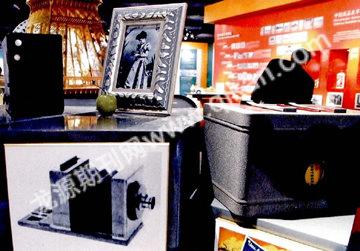
The design plans for the Spanish Pavilion were solicited from women architects. The final plan is in the shape of a Flamenco skirt hem. It is woven from rattan, which can regulate the temperature and is environmentally friendly.
All the temporary pavilions must be dismantled after the 184-day exhibition period, so many advanced technologies have been employed. Various countries have used environmentally friendly technologies and materials, which can be recycled or are degradable. For instance, the outer wall of the Swiss Pavilion will be made of bean fibers, which can be used in power generation. A wall covered with biological paint is degradable.
According to Zhu Yonglei, after the temporary pavilions are dismantled, the land will not be used for real estate development. It will be turned into a new cultural, leisure and business center.
Cases of Good Urban Management
The “urban best practice area” will be a highlight of the 2010 Shanghai World Expo.
According to convention, the participants of the World Expo should be countries or international organizations. A city does not qualify as a participant. But since the theme of this expo is “the city,” an “urban best practice area” has been established. Zhu Yonglei said strictly speaking, the participants in the area are not cities, but exemplary cases of urban management.
At present, 15 buildings and more than 40 exhibit cases have been selected from 108 entries recommended by 80 cities around the world. All these cases have shown good methods of city management, including livable cities, sustainable urbanization, protection and utilization of history, and technological innovation in built environments.
The renovation of Tak Seng On Pawnshop in Macao has been selected as an urban best practice. In 2004 this project won a UNESCO Asia Pacific Heritage Award. Tak Seng On was built in 1917, and was the largest pawnshop in Macao, but by 1990 it was derelict. In 2001 the Macao SAR government invested MOP $1.4 million in its renovation and preservation, and entrusted an entrepreneur to operate it. After renovation, Tak Seng On opened to the general public as a pawnshop museum and cultural venue.
Relocation of Local Inhabitants

The Shanghai World Expo site includes the fenced area (admission ticket area) and land for support facilities. The total expo site covers 5.28 square kilometers on the banks of the Huangpu River. The site required relocating 18,000 households, most of them staff of Jiangnan Shipyard and Shanghai No. 3 Iron and Steel Plant. “The relocated 18,000 households are the first to benefit from the Shanghai World Expo concept: ‘Better City, Better Life,” states Zhu Yonglei.
Jiangnan Shipyard, known as the “cradle of Chinas modern industry,” was established in 1865 as the Kiangnan Arsenal. The total floor space of the shipyard was 440,000 square meters, making up 47 percent of the west section of the World Expo site. Shanghai No. 3 Iron and Steel Plant (Baosteel Groups Shanghai Pudong Iron and Steel Co., Ltd.) is also a time-honored enterprise. It was established in 1913, the earliest iron and steel plant in China, and covered 2.1 million square meters. Zhu Yonglei says, “When the two enterprises were established, they were in suburban areas. With the expansion of Shanghai, they have become core urban areas, and affected the urban environment. The two enterprises have found new opportunities for development through relocation.”
Jiangnan Shipyard moved to Changxing Island at the estuary of the Yangtze River, and its current size is five times the original area, making it Chinas largest, most advanced and modern shipyard, with an annual 4.5-million-ton shipbuilding capacity, ranking second in the world. Shanghai No. 3 Iron and Steel Plant was relocated to Luojing, where it has introduced the worlds latest corex smelting reduction ironmaking technology, which is almost pollution-free.
The 18,000 relocated households used to live in houses built in the 1930s, many with no sanitation facilities. The relocated inhabitants, after receiving compensation, can either buy houses in other areas or houses in the two “World Expo Residential Areas” especially built for them. Most households chose to buy houses in these two areas, since the housing prices are RMB 1,000 lower than those in the similar sections of the city. Zhu Yonglei says, “To most relocated inhabitants, the World Expo has provided an opportunity to improve their housing conditions.”
More than 20 households, however, are not satisfied about this relocation project. Some of them are families with multiple sons and daughters. They hoped that after relocation every family could have independent apartments, and the local government could help solve this problem. Since their original living areas were limited, it is difficult to solve this problem. Some inhabitants of Shanghai No. 3 Iron and Steel Plant who lived in collective dormitories have been relocated to collective dormitories of the same size, and they hope to obtain property rights over the new dormitories. “But under the current law, this problem cannot be solved,” explains Zhu Yonglei.
Shanghai World Expo
Reaches More People via the Internet
The virtual Shanghai World Expo will be
distinguished by the fact it will be a 3-D space, in which visitors can enter any of the exhibition halls with the click of a mouse and view the full range of items on display.
HISTORICALLY the World Expo had a stronger impact than the modern Olympic Games. In fact the first three Olympics were held as part of the more popular Expo, in order to draw greater attention to, and participation in, the sporting event. Nowadays, the situation has obviously changed.
“In my view a main reason for the popularity of the Olympic Games is its marriage with modern mass media,” said Zhu Yonglei, deputy coordination chief of the 2010 World Expo. “TV coverage of the Los Angeles Olympic Games in 1984 marked a revolutionary shift in the way the event makes a profit and reaches the public. The Games marketing also relies heavily on TV broadcasts.”
Mr. Zhu worked in the media before taking his current position, but he doesnt regard television as the best showcase for the exposition. “A disadvantage of the World Expo is its disconnection from modern media,” he said.
Television is perfect for sports, as it is a medium of collective participation. In contrast, an exhibition is an individual experience. People in the same showroom often have disparate responses. So the World Expo can hardly chum up with television, but it can seek an alliance with the Internet.
“The Internet is the one for the World Expo. Web surfers have full say in what, when and how to view the material provided to them. The Internet and the Expo can make a happy couple.” In July 2006 Shanghai raised the idea of setting up an online World Expo in conjunction with the real life one.
The World Expo official website started in 2000 in Hannover, Germany, but the virtual Shanghai World Expo will be distinguished by the fact it will be a 3-D space, in which visitors can enter any of the exhibition halls with the click of a mouse and view the full range of items on display. People will have access to more information online than visitors on site.
The number of international visitors to the Shanghai Expo is estimated to be around 10 million. For others around the world who are interested in the cultural and art extravaganza, the virtual Expo is a good option. Even for people who have the time and means to see the real site, they can pick their priority spots via the Internet beforehand, or catch up with the spots they may miss in a tightly scheduled trip.
In response to concerns that the virtual Expo may drag down the number of visitors to the real life event, Mr. Zhu believes the two will offer different experiences. A telling example is Disneyland, which runs a fascinating website, yet maintains a whopping visitor flow to its mortar-and-steel parks all year round.
World Expo Theme
and Cognizant Progress
WE spent a year and half deliberating on the theme of the 2010 World Expo. We went through all the previous themes and thought that all we wanted to say had been said, leaving nothing for us to present,” recalls Doctor Ji Lude, head of the Theme Development Department of the Shanghai World Expo Coordination Bureau. This is the tenth year that Doctor Ji has worked for the World Expo 2010 Shanghai. In May 1999, when he was a university professor, Shanghai decided to bid for the 2010 World Expo, and Doctor Ji got involved in developing a theme. He has stuck with the project ever since.
“A Century of Progress” was the theme of the 1933 Chicago World Expo, and since then every host city has put forth its own theme. Prior to 1933, the World Expo had no particular theme. It was mostly an occasion for the world to exhibit its abilities and achievements in conquering nature, and trot out many “World Firsts” – among them the high efficiency steam engine, automatic chain type spinning frame, the high speed steamboat and hoist crane of the 1851 London Expo; the elevator of the 1853 New York Expo; the concrete of the 1867 Paris Expo; the printer, gramophone and telephone of the 1876 Philadelphia Expo; the tungsten filament bulb of the 1878 Paris Expo; the filmic images, radio transmitter and receiver, and x-ray machine of the 1900 Paris Expo; the airplane, electric bus, automatic telephone exchange and tube radio of the 1904 St. Louis Expo; and the air-conditioner and robot of the 1933 Chicago Expo. It was often said, “Everything starts with the World Expo,” and even the official publication of the Bureau of the International Expositions (BIE) was named “Progression.”
After World War II, people started to reexamine their worship of science and reflect upon the negative effects that science and industrialization had had on them. The 1958 Brussels World Expo, the first after the war, adopted the theme “A World View – A New Humanism.” In the 1970s, the world switched its attention to the correlations between technological progress and peoples wellbeing and their natural environment. The 1970 Osaka World Expo put forth “Progress and Harmony for Mankind” as its theme. Since the 1990s, sustainable development has been a focus of concern for the world. The 2000 Hannover World Expo emphasized “Humankind-Nature-Technology: A New World Arising,” while the 2005 Aichi World Expo highlighted “Natures Wisdom.”
The World Expo has become a medium and platform for humankind to discuss and explore important issues.
The theme working team of the Shanghai Expo finally picked three of the 32 recommended themes, and two of them were related to the “city.” In 1999, when then BIE chairman Ole Phillipson visited Shanghai, he made 10 theme-related statements, and every one of them included the words “city” and “life.” The group therefore decided the 2010 theme would be “Better City, Better Life.” Doctor Ji says, “A theme should make people feel related, and the issue of the city is a concern of every country in the world. This theme is not independent of previous themes. A city includes people and nature – peoples efforts in conquering nature, their technological progress, their harmony with nature, their relationship with their environment, and the sustainable development of both humankind and nature.”
Next, Doctor Ji and his colleagues moved on to the job of interpreting the theme. He admits that different opinions still exist about the theme, and its English version varies slightly from the Chinese one for technical reasons. Some people questioned the Chinese version, “Does only the city make life more beautiful? How about the countryside?” Doctor Ji argues, “What the World Expo conveys is an appeal, not a conclusion.”
Though the Western world has entered the post-modern period and is troubled by the problems of crime, pollution, high consumption and other urban plagues, China has just entered the rapid lane of urbanization, and the city lures rural residents as a paradise of beautiful lives. The city is an important way of life for humankind. Currently half of the worlds population live in cities, and in 20 years, 70 percent will. Meanwhile, how to make lives in cities better is a topic of common concern around the world.
The bidding for the 2010 World Expo was fierce, and Shanghai entered the last round with Moscow, Queretaro of Mexico, Wroclow of Poland and Yeosu of the Republic of Korea. At 22:15 Beijing time on December 3, 2002, Shanghai won the final bid with 54 votes, 88 percent of the total, at the 132nd BIE general assembly in Monte Carlo, Monaco.
A main reason that Shanghai won the host bid is that the theme it proposed won general acknowledgement around the world.
China at the World Expo
Agood variety of industrial, agricultural and handicraft products from China appeared at the first World Expo in London in 1851. Silk sent by a Guangdong merchant living in Shanghai won both the gold and silver prizes. The man, Xu Rongcun, got news of the expo from British diplomats and businesspeople in Shanghai, and shipped 12 packages of Yung Kee silk from his store. Due to the coarse packaging, the fine material was neglected for several months, but was immediately loved once opened. The queen personally handed the gold and silver medals and certificates to Xu Rongcun. Orders from both home and abroad soon flooded into his store.
During the 1889 World Expo in Paris, a group of Chinese officials who didnt know any foreign languages and had never left China before visited the Eiffel Tower in the company of Chinese councilor Chen Jitong. The tower was a landmark of the expo, while the machinery hall showcased the latest technical achievements of the age. The group also went up in a hot air balloon.
In the early 20th century Chinas presence at the World Expo was manipulated by foreigners who took charge of Chinese customs under colonial treaties forced on the decrepit feudal regime. Motivated by economic interests, these people often painted China in a negative light. For instance, the 1904 Expo in St. Louis featured a group of clay sculptures depicting Chinese prostitutes, beggars, prisoners and opium addicts. This practice didnt change until the Milan Expo in 1906, when China organized participation by its officials and citizens without the meddling of foreign forces.
The Peoples Republic of China made its debut at the World Expo in 1982 in Knoxville. The China Pavilion, with a resplendent display comprising ten bricks from the Great Wall, the terracotta warriors and bronze chariots of Emperor Qinshihuangs tomb and other national treasures, received 30,000 visitors every day, almost one-fourth of the total number visiting the expo. Local media exclaimed that Americans were mesmerized by the old bricks of Chinas Great Wall. By the 2005 expo in Aichi, China had participated in 11 World Expos and all registered international expositions. Its ancient civilization remained a strong attraction to visitors.
In recent decades China has increased the science and technology component of its presentations at the World Expo. At the Brisbane Expo in 1988, China projected an 18-minute circarama featuring scenes around the nation, which was warmly received. The China Pavilion got a five-star rating and the best pavilion award. At the Seville Expo in 1992 the Chinese exhibition included communications satellites and the Long March-II rocket. During the 1993 Expo in Taejon, China revealed its latest space technologies and plan for the Three Gorges Project.
Since picking a theme for national pavilions has became routine at the World Expo, all participating nations have racked their brains to cram their best ideas into a concise line. Doctor Ji Lude, chief of the Theme Development Department of the Bureau of Shanghai World Expo Coordination, called the themes the soul of the exposition. He advocated that China needs an ingenious theme that can transcend the stereotype of hoary history and new technology.
At expos of the early 20th century, China introduced itself through diminutive replicas of old city gates, the Great Wall, courtyard residences and temples. Years later at the 1993 Taejon Expo its landmark item remained of the cultural-historical type: a model of the southern gate of the imperial palace. Since the Hannover Expo in 2000 voices against traditional culture, plus calls to show scientific and technological achievements, have grown louder and gained increasing attention.
The China Pavilion at the Shanghai Expo will be based on the theme, “Chinese wisdom in urban development,” which is interpreted through four Chinese phrases – constantly working to improve oneself, cultivation of amplitude in emulation of the earths benevolent support of man and nature, following the law of nature, and seeking harmony while preserving difference. It is meant to catch the spirit of todays urban culture as well as promote amity between individuals, and mankind and nature, all of which are plainly evident in Chinese cities. As for the actual exhibition in the pavilion, Yang Xiong, executive vice-mayor of Shanghai and executive deputy director of the Shanghai Expo Executive Committee, told media that it would be kept secret until the last minute. The reason: to give the world a surprise.
World Expo 2010 Shanghai
Category
The Bureau of International Expositions (BIE) divides the world expositions into registered and recognized categories. The first type is held every five years (since 2000), with each session lasting six months. The second type is held in-between registered world expositions, and each session lasts three months. The 2010 Shanghai Expo is a registered exposition.
Theme
Better city, better life.
Emblem
The emblem depicts the images of three people, standing for “you,” “me,” and “him/her,” holding hands together. The design resembles the Chinese character“世” (meaning the world). The design conveys the desire of the organizers to promote understanding, communication and cooperation between people around the world through the exposition, and gives prominence to the humanistic feature of the event.
Mascot
Haibao, meaning treasure of the four seas (in Chinese the four seas refer to the whole world). In the shape of the Chinese character “人”, or “person,” the merry plump blue creature conveys the message “people can create a good life, and therefore fully enjoy it.”
Time
May 1 to October 31, 2010 (184 days)
Organizational Structure
The Organizing Committee of the Shanghai 2010 World Exposition was founded to lead the nations preparations for the international event. Its daily work is handled by the Executive Committee, whose standing body is the Bureau of Shanghai Expo Coordination.
Activities and Forums
The Shanghai Expo will host summits, themes and public forums. The summit forum stands above the other two, and will discuss common issues confronting cities worldwide, before delivering an outline for urban development known as the “Shanghai Declaration.”
Throughout its 184 days more than 100 performances will be held at the expo every day, representing more than 20,000 performances in total. They will be staged by the host, the participating nations, as well as international organizations.
Locale
The expo sits at the waterfront of the Huangpu River between the Nanpu and Lupu bridges. Of the planned area of 5.28 square kilometers, 3.93 square kilometers are in Pudong, and the rest in Puxi. The fenced area (admission ticket required) will be around 3.28 square kilometers.
Exhibition Halls
Zone A: The China Pavilion and national pavilions for Asian countries except for Southeast Asian ones.
Zone B: Theme pavilions, national pavilions for countries in Southeast Asia and Oceania, pavilions of international organizations, the Expo center and Performance Center.
Zone C: National pavilions for European, American and African countries.
Zone D: Corporate pavilions
Zone E: Corporate pavilions, urban civilization pavilions and the Urban Best Practice Area.
Official Website
http://www.expo2010china.com
